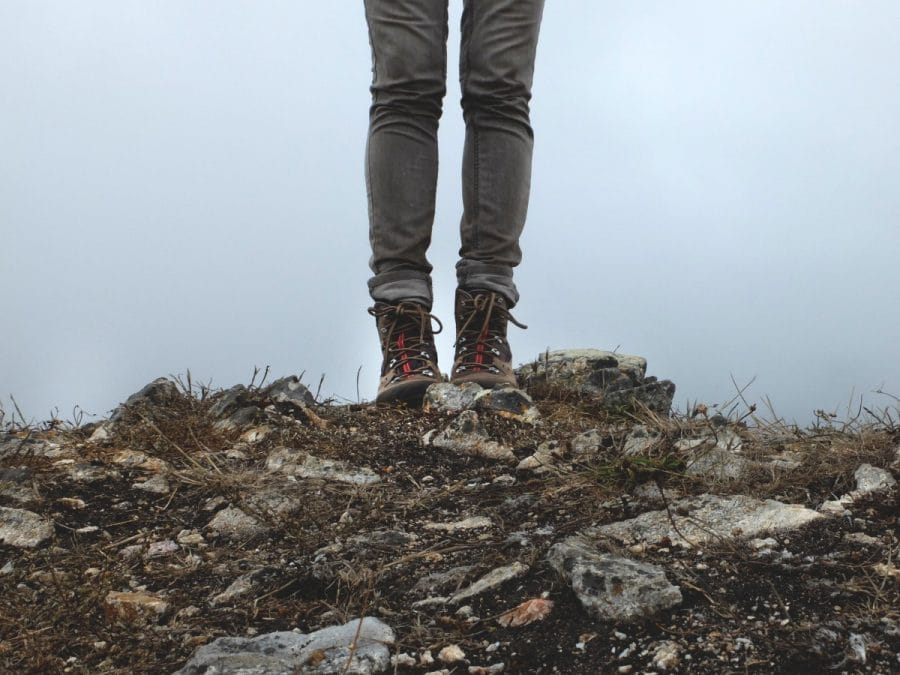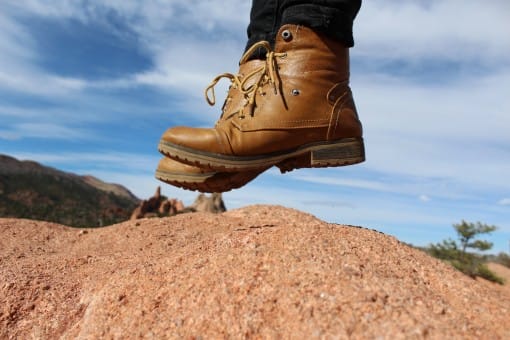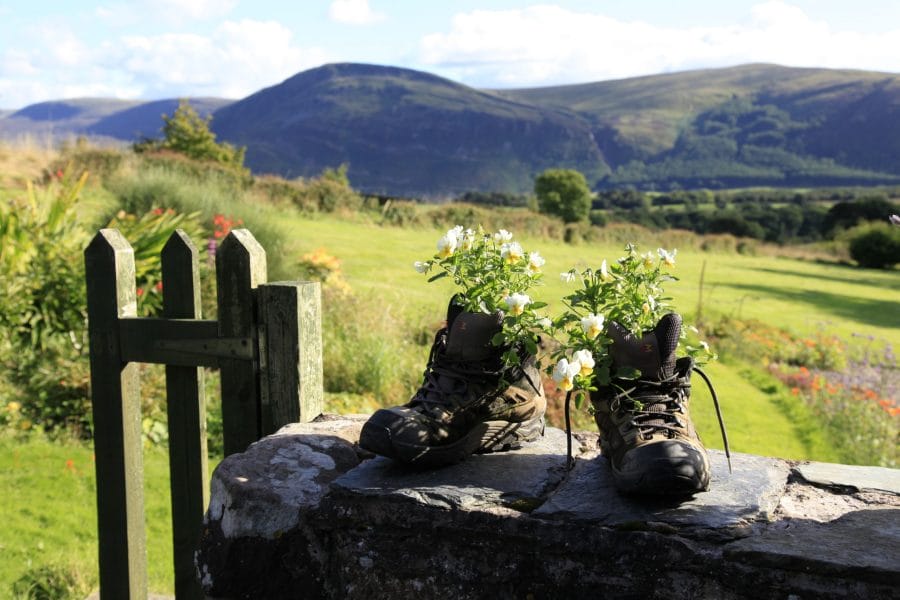Choosing the right hiking boots is a determining factor in your comfort while out hiking. Ideally, your boots should be suitable for the type of hike you plan to do. In this post, we explain how to differentiate between the many types of boots and how to choose the correct hiking boots for your next trip.
Types of hiking boots
You will find all kinds of hiking boots in stores, from ultralight to mountaineering boots. We will first classify them into three categories:
1. “Low-uppers” or hiking shoes
The upper is the upper part of the shoe, the section that covers your foot. Low-cut models are shoes that do not go up to the ankle and have a flexible midsole. These are perfect for day hikes without descents, or walks on paved roads or tarmac.
2. “High-uppers” or day hiking boots
This category includes mid to high cut models. These are designed for more sustained hikes in nature or in the mountains or steeper terrain, but normally without heavy backpacks.
3. “Heavyweight boots” or backpacking boots
These are designed to help you withstand heavier loads when you go hiking for several days in the great outdoors. The cut is high and envelops the ankles well for excellent foot support. These shoes are heavier, and are suitable for travel on or off the trails.

Also read our post: Footcare For Hikers – A Hillwalk Guide
Shoe components
The materials used will have an impact on the weight, breathability, durability and impermeability of the shoes. Here are some other things to consider when choosing your hiking boots as well.
1. Full grain leather
The full-grain leather provides excellent durability and abrasion resistance and is very waterproof. It is most often used in hiking shoes designed for long trips, heavy loads, and rough terrain. It is not as light and breathable as synthetic shoes. A significant break-in time will also be necessary before these boots can be used for hiking.
2. Nubuck leather
The nubuck leather is a full grain leather polish that looks like suede. Like full grain leather, it offers durability, waterproofing and abrasion resistance. It’s also quite flexible, but you also have to plan to “break” these shoes for a while before you can use them for a long hike.
3. Synthetic materials
The polyester, nylon and “synthetic leather” are commonly used in modern shoes. These materials are lighter than leather, dry faster, and generally cost much less.
4. Waterproof membranes
So-called “waterproof” shoes have “an upper” made of waterproof and breathable membranes (like Gore-Tex or eVent) to keep feet dry in wet weather.
5. Midsoles
The midsole provides cushioning and protects the feet from impact. It largely determines the stiffness of the shoe.
- For long hikes on rough terrain, stiff shoes (polyurethane sole) provide more comfort and stability.
- For less demanding hikes, ethylene vinyl acetate midsoles are sufficient: they are less dense, therefore lighter and less expensive.
6. Outsoles
Rubber is generally used in the composition of all of the soles of hiking boots. Additives such as carbon are sometimes added to soles to increase their hardness. Hard soles will increase durability, but can also be slippery.
The studs which are often added will help improve grip. The same goes for the heel brake (clearly defined heel area distinct from the forefoot), which reduces your chances of slipping on steep descents.

Also read our post: 5 tips to manage fatigue while hiking
Footwear adjustment
In a word… comfort ! If there is only one thing you need to remember from this post, then remember that your hiking boots should be comfortable!
Pay attention to the choice of your shoes. They must also be adapted to your foot and above all be of good quality.
Your best bet is to go to a sports or outdoor store to buy good boots in your size. You can get specialist advice if you are not sure which pair to take. However, we recommend that you avoid shopping in supermarkets or online… unless you buy a brand that you have already worn (in this case, the fit should be similar).
Know your size. Your shoes should fit snugly. That is, not be squeezed anywhere (so as not to obstruct blood flow) and provide enough room to wiggle your toes. The foot must be well supported without being compressed. The back of the foot should remain firmly glued to the heel of the shoe. The shoes should not be too tight for the front of the foot, and the toes should not hit the tip of the shoe when going downhill.
The fit of your shoes is crucial! If the foot slips too much, you will have friction, which will lead to blisters. If the shoes are too tight, your toes will be curved which will cause pain when walking. In any case, it is likely to ruin your hike!
If you are buying new shoes, it is also best to try them on in the late afternoon. Your feet normally swell a little during the day… so you can be sure that you don’t end up with shoes that are too tight. Also, don’t forget to try on your shoes with the socks you plan to wear!

Your hiking boots
So let’s recap. Important questions to ask yourself when shopping for new hiking boots are:
- Do they provide good ankle support?
- Are they breathable and waterproof?
- Are they comfortable?
It is important to find a pair that is the perfect fit for you.
Finally, don’t forget that you will have to “ break in” your shoes before going on a hike. New shoes can become a hiking nightmare… so make sure you put them on regularly before you go out hiking with them! Spend time in your shoes. Walk around with it in stores. Go up and down the stairs. They will only be more and more comfortable the more you wear them when you put them on for your trip!
Also read our guide: How To Treat Hiking Injuries



